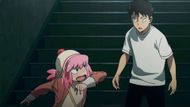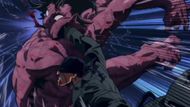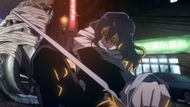My Hero Academia: Vigilantes operates in the unseen corners of society, where official heroes have no reach. Every day, individuals, from college dorms to hidden circles, take justice into their own hands using quirks without legal sanction. These unlicensed protectors challenge standard heroism while facing moral dilemmas that skilled heroes never encounter.
My Hero Academia: Vigilantes holds official canon status within the franchise universe. Kohei Horikoshi, the series’ creator, has officially approved the prequel as part of the main storyline’s canon. The spin-off's events literally influence main series developments, setting factual narrative connections that prove its canonical legality.
Debates over canon status usually hinge on the creator’s participation and formal acknowledgment. Kohei Horikoshi has implied that Vigilantes is part of the overarching narrative, directing many fans to accept its canonicity. Despite not writing the series directly, Horikoshi sustains creative oversight over the project.

Official translator Caleb Cook informed that Horikoshi actively suggests story elements for My Hero Academia: Vigilantes. This behind-the-scenes involvement illustrates the original creator's commitment to maintaining narrative texture across both series.
Set about five years prior to Izuku Midoriya’s journey, the Vigilantes centers on Koichi Haimawari—a college student whose path to heroism veers off course in unexpected ways. Instead of dumping his aspirations entirely, he becomes a vigilante using his Slide and Glide Quirk.
The story delves into the morally complex corners of hero society. Licensed heroes cannot be everywhere simultaneously, developing opportunities for vigilantes to fill risky gaps. This premise lets the story examine heroism from a completely different perspective than the main series.
Key Evidence and Connections Supporting Canon Status of My Hero Academia: Vigilantes

Several concrete references prove My Hero Academia: Vigilantes belongs to the official timeline. The Quirk-enhancing drug Trigger first occurred in the spin-off before becoming crucial to the main series' Shie Hassaikai arc. This cross-pollination of story parts shows intentional narrative planning.
Character backstories also bridge both series effectively. The spin-off reveals Stain's origin story as the vigilante Stendhal before his changeover into the Hero Killer. Familiar faces like All Might, Eraserhead, and Ingenium emerge in their younger forms, supplying deeper context for their later appearances.
The most decisive proof of canonicity comes via character appearances. Koichi Haimawari appears briefly in the final chapter of the main manga, now recognized as a fully licensed professional hero. This formation confirms his successful transition from illegal vigilante to legitimate hero status.

My Hero Academia: Vigilantes also introduces Oboro Shirakumo, whose tragic fate ties directly to the Nomu storyline in the main series. These character threads weave both narratives into a cohesive shared universe that enriches the overall mythology.
The anime adaptation of this prequel was produced by Studio Bones Film, delivering the same top-tier animation and direction as the main series and its movies. The professional treatment reinforces the spin-off's official status within the franchise hierarchy. Understanding My Hero Academia: Vigilantes as canon enriches the overall viewing experience. The prequel provides essential context for several main series plot points that might otherwise seem disconnected or underdeveloped.
The spin-off also expands the world-building significantly. It shows how hero society functions at street level, away from the prestigious academies and major villain confrontations that dominate the main storyline.
As such, My Hero Academia: Vigilantes stands as undeniable canonical material within the superhero franchise. Creator endorsement eliminates speculation about legitimacy while story interconnections prove narrative cohesion. Underground heroism deserves recognition alongside academy-trained professionals in this expanding universe.
